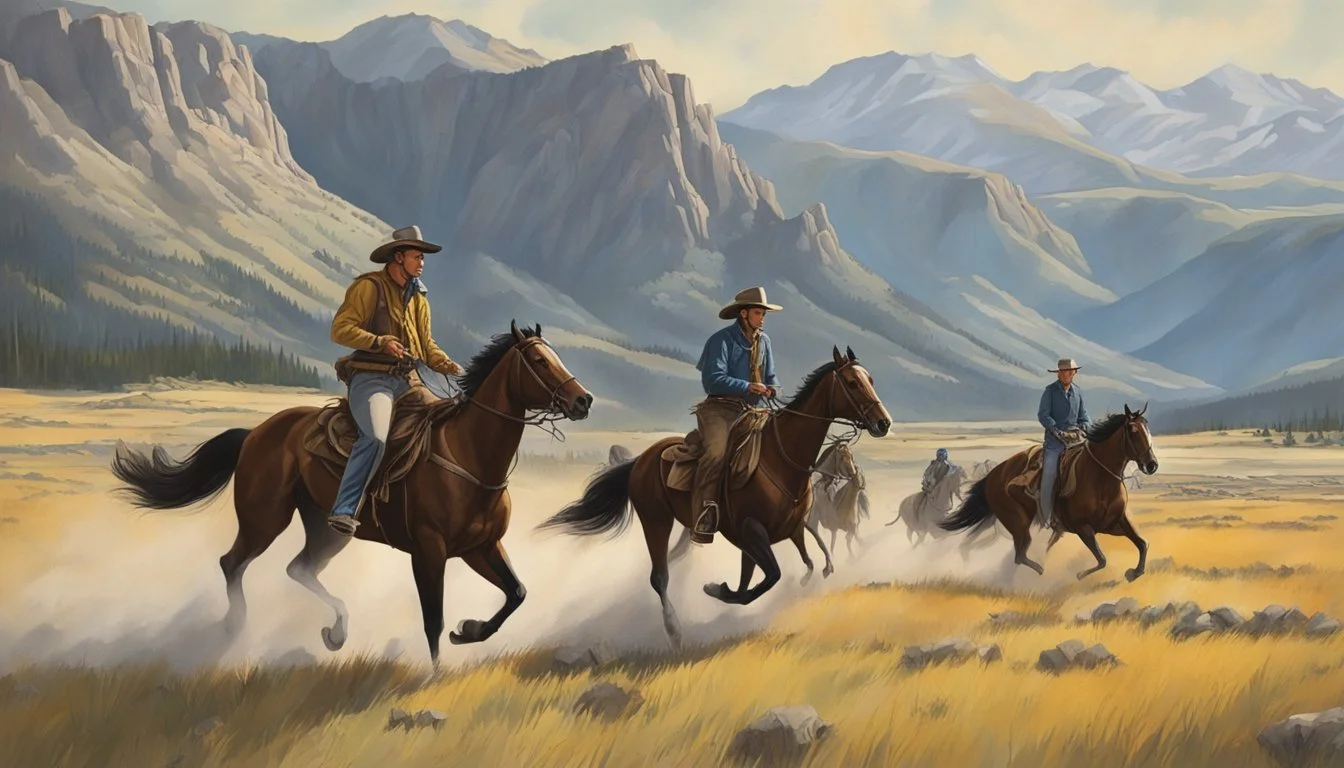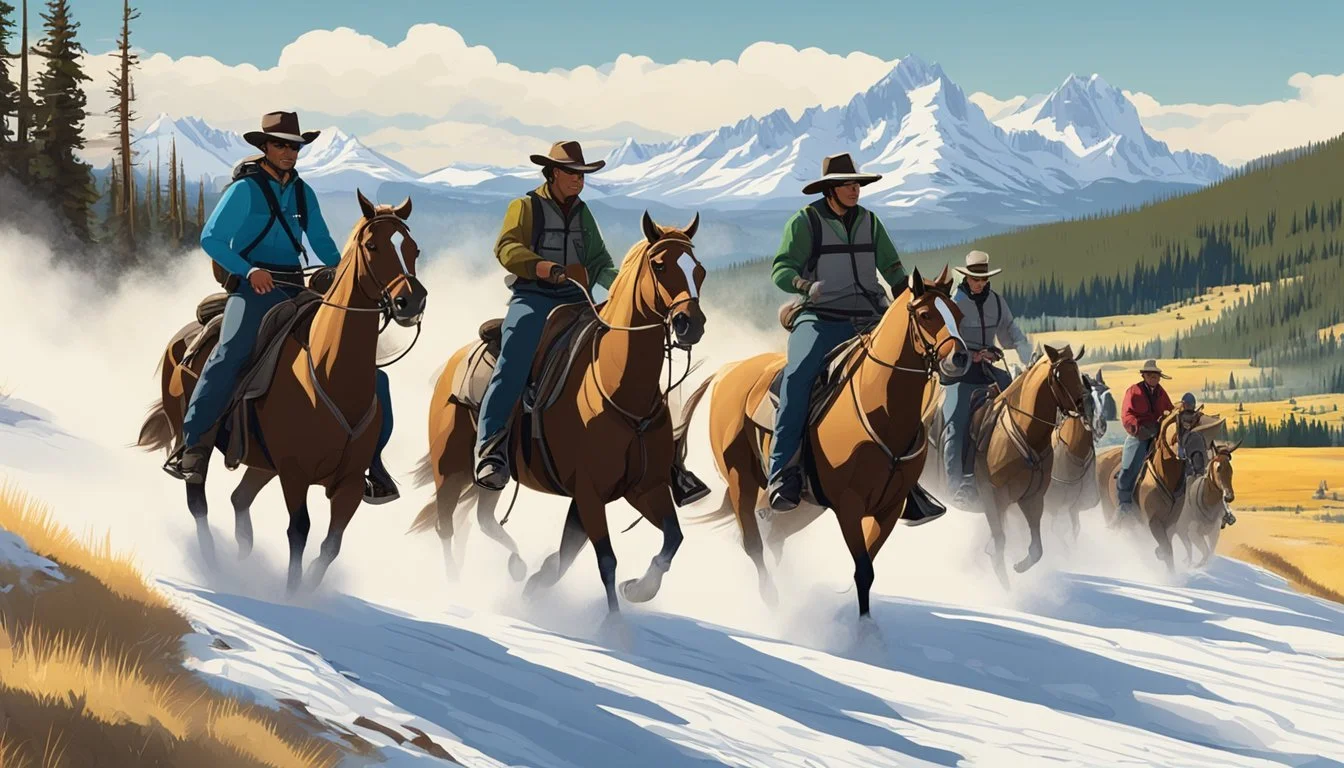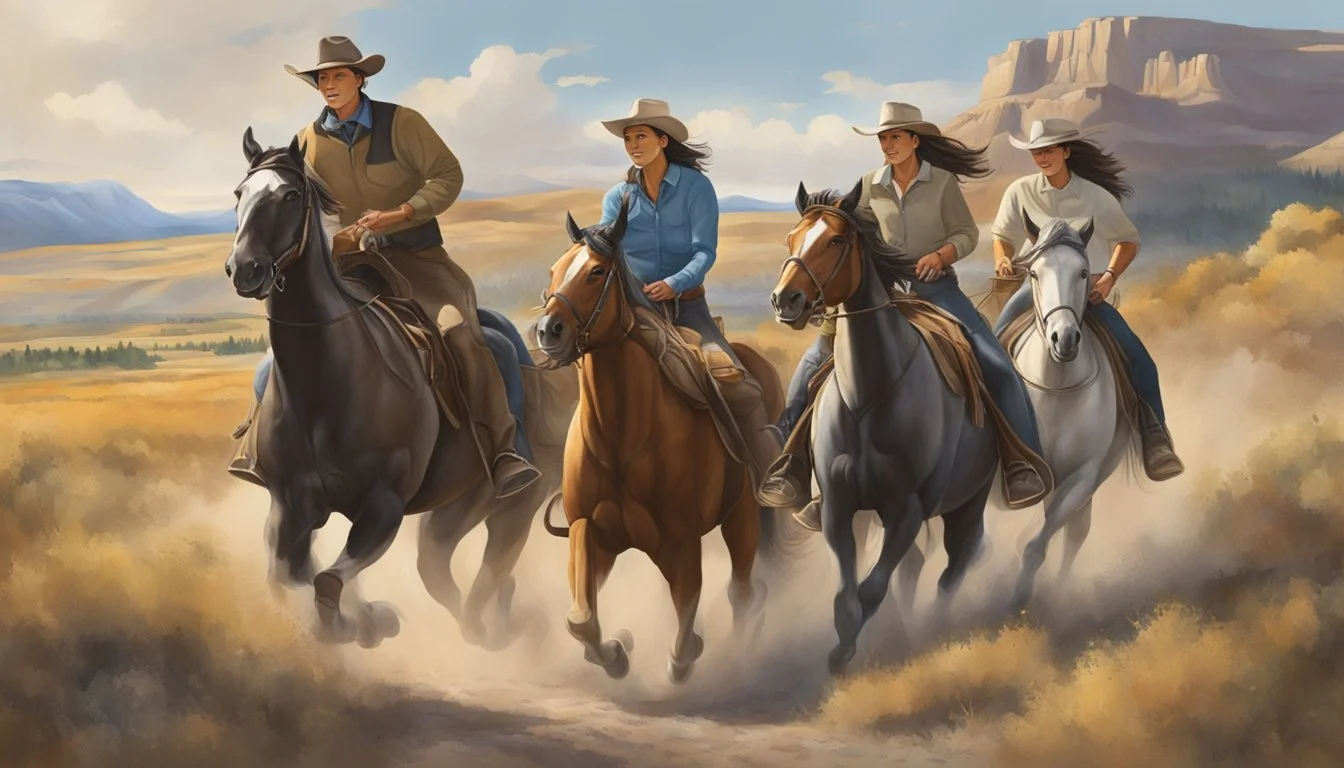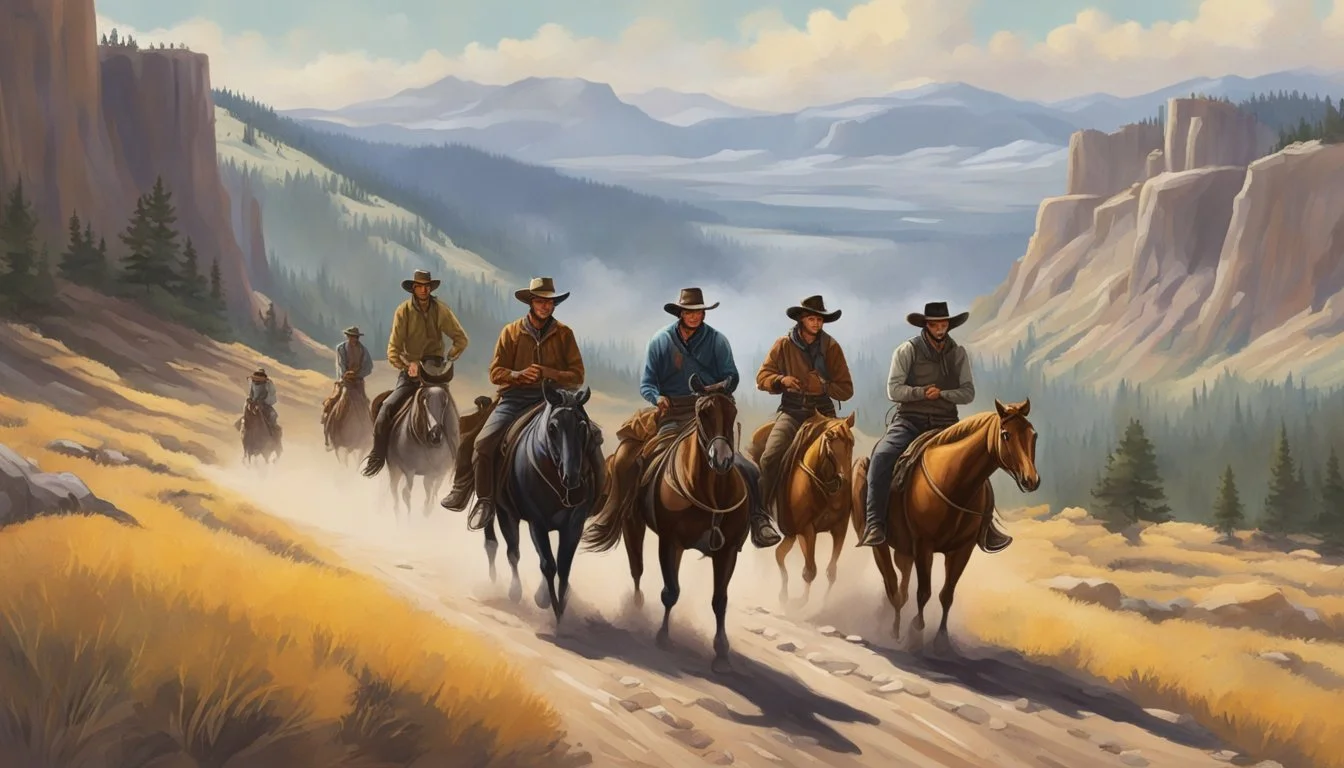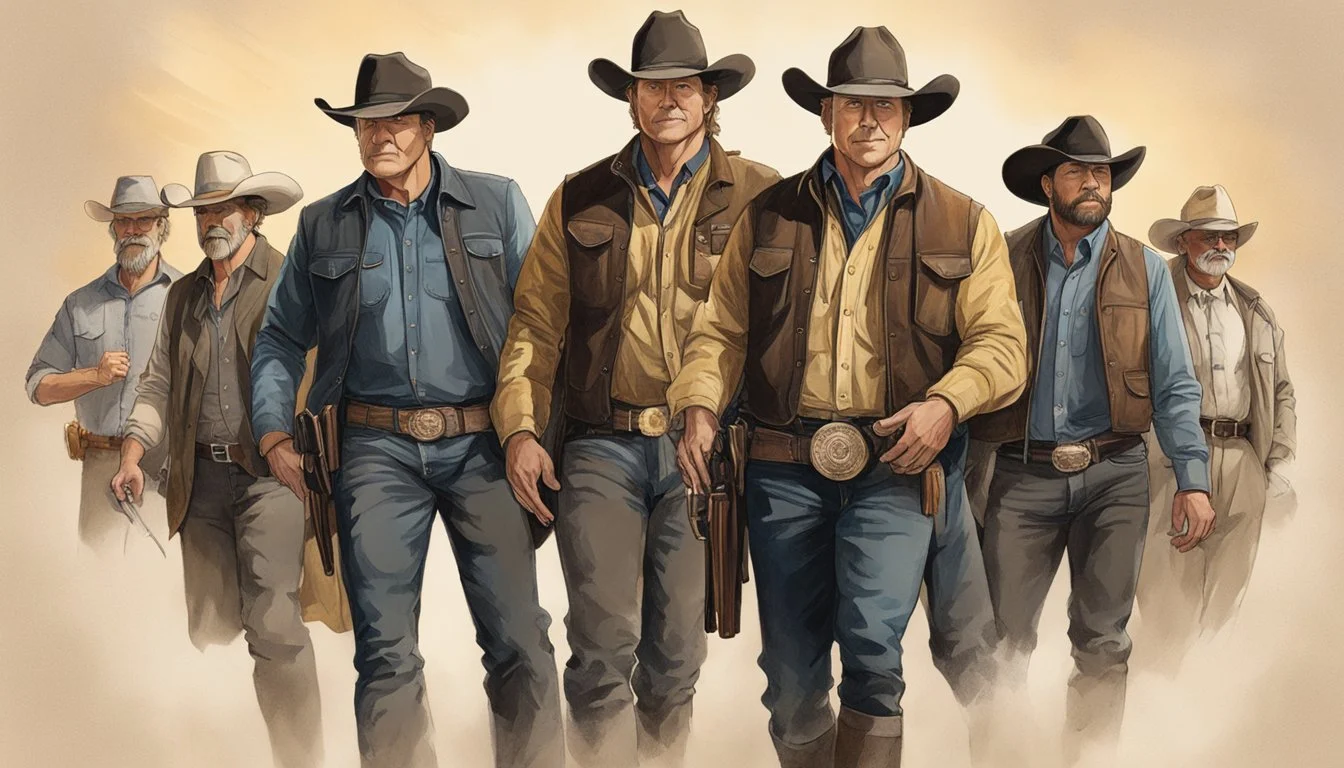Discover the Hidden Truth Behind Bozeman Yellowstone and Its Stunning Landscapes
Bozeman, Montana has captured the imagination of viewers worldwide through its portrayal in the hit TV series "Yellowstone." While the show's dramatic storylines revolve around the fictional Dutton Ranch, Bozeman serves as a real-life backdrop for many of the series' scenes. The actual filming location for "Yellowstone" is the Chief Joseph Ranch near Darby, Montana, about 4 hours west of Bozeman.
The show's depiction of Montana life has sparked curiosity about the real Bozeman. While "Yellowstone" takes creative liberties, it does showcase the stunning landscapes and rugged beauty of the region. The series features iconic Montana landmarks, including glimpses of Yellowstone National Park, which lies about 80 miles south of Bozeman.
Kevin Costner's portrayal of John Dutton, the patriarch of the Dutton family, has become synonymous with the image of a modern Montana rancher. The character's struggles to maintain his vast landholdings reflect real tensions between preservation and development in rapidly growing areas like Bozeman. This blend of fiction and reality has made "Yellowstone" a cultural phenomenon, drawing increased attention to Bozeman and its surroundings.
The Show's Origins and Development
Yellowstone emerged as a gritty portrayal of modern Western life, blending family drama with high-stakes land conflicts. The series drew inspiration from Montana's rugged landscapes and the complexities of the American West.
Creation by Taylor Sheridan
Taylor Sheridan, a former actor turned writer-director, co-created Yellowstone with John Linson. Sheridan's vision for the show stemmed from his fascination with the changing dynamics of the American West. He aimed to explore themes of land ownership, family legacy, and the clash between tradition and progress.
Sheridan's background in Western-themed projects, including his screenplays for "Sicario" and "Hell or High Water," informed Yellowstone's narrative style. The show's development focused on crafting a nuanced portrayal of modern ranch life and the power struggles inherent in controlling vast tracts of land.
Casting and Character Development
Kevin Costner's casting as John Dutton, the patriarch of the Dutton family, was a crucial element in shaping the show's direction. Costner's experience with Western roles lent authenticity to the character of John Dutton, a tough rancher fighting to preserve his family's legacy.
The show's creators carefully developed each character to represent different facets of Western life. They crafted complex personalities that reflected the tensions between traditional values and modern pressures. This attention to character depth contributed significantly to the show's popularity and critical acclaim.
Inspiration From Montana and the American West
Montana's breathtaking landscapes played a central role in inspiring Yellowstone's setting and themes. The show's creators drew from the state's natural beauty, incorporating iconic locations like the Paradise Valley into the fictional Yellowstone Ranch.
The series also tapped into real-world issues affecting the American West, such as land development pressures and conflicts between ranchers and Native American tribes. These elements added depth and relevance to the show's storylines, resonating with viewers familiar with Western issues.
Yellowstone's portrayal of rural America and its challenges struck a chord with audiences, contributing to its widespread appeal and success as a modern Western drama.
Main Filming Locations
The hit TV show Yellowstone captivates audiences with its stunning scenery. Several key locations across multiple states bring the Dutton family's world to life on screen.
Chief Joseph Ranch and Its Significance
Chief Joseph Ranch in Darby, Montana serves as the iconic Yellowstone Dutton Ranch. This working guest ranch encompasses 2,500 acres in the picturesque Bitterroot Valley. Its 6,000 square foot lodge doubles as the Dutton family home.
The ranch's breathtaking mountain views and rustic charm perfectly capture the essence of the show's setting. Scenes featuring the ranch house, barns, and corral areas are filmed here.
Chief Joseph Ranch holds historical significance as well. It was once home to the Salish tribe before becoming a homestead in the late 1800s. This rich history adds depth to the fictional Dutton legacy portrayed in Yellowstone.
Locations Across Montana
Montana plays a starring role in Yellowstone's filming. The show utilizes various locations throughout the state to create its immersive world.
Livingston serves as a key filming site. Its charming downtown area appears frequently, doubling as the fictional town of Paradise Valley. Local businesses and streets are transformed to fit the show's aesthetic.
Bozeman also features prominently. The city's outskirts provide scenic backdrops for ranch scenes and outdoor shots. Its proximity to Yellowstone National Park allows for easy access to additional filming locations within the park itself.
Other Montana locations include:
Helena: The state capital appears in government-related scenes
Missoula: Used for urban settings and university scenes
Paradise Valley: Provides stunning natural scenery for outdoor shots
Other Key Filming Sites in Utah and Texas
While Montana is central to Yellowstone's setting, the show expands its filming locations to other states for added variety and specific plot points.
Utah hosts several important scenes. The state's diverse landscapes offer:
Desert vistas for wide-open range shots
Salt flats for dramatic confrontations
Mountain ranges that complement Montana's scenery
Park City, Utah serves as a stand-in for some Montana town scenes.
Texas plays a smaller but significant role in Yellowstone's filming. The state provides:
Ranch locations for flashback scenes
Urban settings for business meetings and political events
Distinct landscapes that contrast with Montana's terrain
These out-of-state locations add depth and variety to the show's visual storytelling.
Exploring the Dutton Family Legacy
The Dutton family's legacy on the Yellowstone Dutton Ranch spans generations, shaping Montana's landscape and politics. Their influence extends far beyond their vast property, impacting local communities and rival interests.
John Dutton's Vision for the Ranch
John Dutton, the patriarch of the family, fiercely protects the ranch's legacy. He views the land as a sacred trust, passed down through generations. John's vision involves preserving the ranch's traditional ways while adapting to modern challenges.
He employs both legal and sometimes questionable tactics to maintain control. This includes strategic alliances with politicians and confrontations with developers. John's children play crucial roles in his plans, each tasked with safeguarding different aspects of the ranch's interests.
The ranch faces constant threats from land developers, oil companies, and the neighboring Broken Rock Indian Reservation. John's determination to keep the land intact often puts him at odds with progress and change.
Conflict and Cooperation Within the Family
The Dutton family dynamics are complex, marked by both loyalty and internal strife. Siblings Beth, Jamie, and Kayce often clash over their roles and the ranch's future.
Beth Dutton, John's daughter, serves as a fierce protector of family interests in the corporate world. Her sharp business acumen and ruthless tactics make her a formidable ally and enemy.
Jamie Dutton, the adopted son, struggles with his identity and place within the family. His legal expertise is valuable, but his ambition sometimes puts him at odds with John's goals.
Kayce Dutton, a former Navy SEAL, balances his duties to the ranch with his connection to his wife's Native American family. This creates tension and opportunities for bridging cultural divides.
Impact on Local Communities and Rivals
The Yellowstone Dutton Ranch wields significant influence over local economies and politics. Its vast size and economic power make it a major employer and stakeholder in regional decisions.
Conflicts with the Broken Rock Indian Reservation are ongoing. Land disputes and resource rights create tension between the Duttons and tribal leaders. These conflicts often highlight historical injustices and contemporary power struggles.
The ranch's presence affects smaller landowners and businesses in the area. Some benefit from the Duttons' protection against outside interests, while others feel overshadowed or pressured.
Environmental groups and conservationists sometimes clash with the ranch's operations. The Duttons' land management practices and development decisions face scrutiny and legal challenges.
Cultural and Historical References
The show "Yellowstone" weaves authentic elements of Montana's culture and history into its narrative. It draws inspiration from real cowboys, ranch life, Native American traditions, and significant historical locations and events in the region.
Depiction of Real Cowboys and Ranch Life
"Yellowstone" portrays the daily operations of a modern ranch with remarkable authenticity. The series showcases real cowboys performing tasks like branding cattle, mending fences, and participating in rodeos. These depictions reflect the genuine lifestyle of ranchers in Montana's American West.
The show's characters embody the resilience and grit associated with ranch life. They face challenges like harsh weather conditions, financial pressures, and conflicts over land use. This realistic portrayal resonates with viewers familiar with the ranching culture.
"Yellowstone" also highlights the economic realities of maintaining large ranches in the 21st century. It explores issues such as land development pressures and the struggle to keep family-owned ranches operational in a changing landscape.
Incorporation of Native American Culture
Native American culture plays a significant role in "Yellowstone," reflecting the real-world presence and influence of indigenous peoples in Montana. The show features characters from the fictional Broken Rock Indian Reservation, which draws parallels to the actual Crow Indian Reservation in Montana.
"Yellowstone" explores complex themes such as land rights, tribal sovereignty, and the preservation of Native American traditions. It depicts traditional ceremonies, spiritual practices, and the ongoing struggle to maintain cultural identity in the face of modern challenges.
The series also touches on historical injustices and contemporary issues facing Native American communities. This includes conflicts over land ownership, resource management, and the impact of development on sacred sites.
Historical Locations and Events
"Yellowstone" incorporates real historical locations and events into its storyline, grounding the show in Montana's rich past. The series features iconic landmarks like the Montana State Capitol, adding authenticity to its portrayal of state politics and power dynamics.
The show references significant historical events that shaped Montana's development. These include the early days of cattle ranching, the expansion of the railroad, and the establishment of Yellowstone National Park.
"Yellowstone" also explores the lasting impact of these historical events on contemporary issues. It examines how past land treaties, resource exploitation, and political decisions continue to influence present-day conflicts and relationships in the region.
Behind-the-Scenes Insights
The production of "Yellowstone" involves intricate details and challenges. Cast members, wardrobe choices, and filming locations all contribute to the show's authentic Western feel.
Production Challenges and Triumphs
Filming "Yellowstone" presents unique obstacles. The show uses real working ranches as sets, including the 2,500-acre Chief Joseph Ranch in Darby, Montana. This authentic setting adds realism but requires careful coordination with ranch operations.
Weather conditions in Montana can be unpredictable, affecting shooting schedules. The crew must adapt quickly to changing environments.
Despite these challenges, the production team has created stunning visuals. The Bitterroot Valley's picturesque landscapes, with Trapper Peak visible, provide a breathtaking backdrop for many scenes.
Cast Interviews and Personal Stories
Kevin Costner, who plays John Dutton, has spoken about his connection to the role. He draws on his own experiences with ranch life to bring authenticity to his character.
Kelly Reilly, portraying Beth Dutton, has described the physical demands of her role. She often performs her own stunts, adding to the show's realism.
Cast members have shared stories of bonding over long hours on set and learning new skills like horseback riding and roping.
Wardrobe and Set Design
Cowboy hats are a crucial element of the "Yellowstone" wardrobe. Each character's hat is carefully chosen to reflect their personality and status.
The wardrobe department sources authentic Western wear from local Montana shops and custom designers. This attention to detail helps create a genuine ranch atmosphere.
Set designers work tirelessly to create accurate interiors for the Dutton ranch house. They blend period-appropriate furnishings with modern touches to reflect the family's long history and current lifestyle.
The production team has also transformed parts of Bozeman and other Montana towns to depict various urban scenes in the show.
Impact on Popular Culture and Tourism
The Yellowstone TV series has profoundly influenced Montana's tourism industry and popular culture. Its depiction of rugged landscapes and cowboy lifestyle has captivated audiences worldwide, leading to increased interest in the state and its attractions.
Boost in Interest Towards Montana
Yellowstone's portrayal of Montana's scenic beauty has sparked a tourism boom. The show added $730 million to Montana's economy in 2021 through increased visitation. Bozeman, a key filming location, has seen a surge in tourists eager to experience the landscapes featured in the series. Hotels, restaurants, and local businesses have benefited from this influx of visitors.
The series has also reignited interest in cowboy culture and the American West. Viewers are drawn to the romanticized vision of ranch life depicted on screen. This has led to increased bookings for dude ranches and Western-themed experiences across Montana.
Visiting Recognizable Show Landmarks
Fans of Yellowstone often seek out filming locations featured in the series. While the fictional Dutton Ranch doesn't exist, many real locations in Montana serve as backdrops for the show. Popular spots include:
Downtown Darby, which stands in for the town of Paradise Valley
The Missoula County Courthouse, featured as the Montana State Capitol
Chief Joseph Ranch near Hamilton, used for exterior shots of the Dutton Ranch
These locations have become pilgrimage sites for devoted fans, boosting local economies. Tour companies now offer Yellowstone-themed excursions, taking visitors to recognizable landmarks from the show.
Merchandising and Fan Gatherings
Yellowstone's popularity has spawned a range of merchandise and fan events. Official products include clothing, home decor, and accessories inspired by the show's aesthetics. Local businesses in Bozeman and other Montana towns have capitalized on this trend, creating their own Yellowstone-themed goods.
Fan conventions and gatherings have become popular, drawing visitors from across the country. These events often feature:
Meet-and-greets with cast members
Panel discussions about the show
Western-themed activities and demonstrations
As Yellowstone Season 5 continues to air on Paramount Network, the show's impact on Montana's tourism and popular culture is likely to grow further.
Reception and Critical Acclaim
Yellowstone has garnered significant attention since its debut, with its reception evolving over time. The show's ratings, awards, and critical response have shaped its place in contemporary television.
Television Ratings and Milestones
Yellowstone's viewership has grown steadily since its premiere on Paramount Network. The show's fifth season premiere in November 2022 drew 12.1 million viewers, setting a new record for the series. This marked a substantial increase from the 2.8 million viewers who tuned in for the first season's debut in 2018.
The series has consistently ranked among the top cable shows in the U.S. Its success has led to increased demand for streaming rights, with Peacock acquiring the show's back catalog for a reported $200 million in 2020.
Awards and Nominations
Yellowstone has received recognition from various award bodies. The show earned its first major nomination at the 2022 Screen Actors Guild Awards for Outstanding Performance by an Ensemble in a Drama Series.
Kevin Costner won a Golden Globe for Best Actor in a Television Series - Drama in 2023 for his portrayal of John Dutton. The series has also garnered nominations at the Primetime Emmy Awards for production design and cinematography.
Critique of Storytelling and Authenticity
Critics' opinions on Yellowstone have varied across seasons. Initial reviews were mixed, with some praising the show's visuals and performances while others criticized its pacing and plot development. Taylor Sheridan's writing has been both lauded for its gritty realism and questioned for its portrayal of modern Western themes.
Later seasons saw improved critical reception. Reviewers noted stronger character arcs and more cohesive storytelling. The show's depiction of conflicts between ranchers, Native Americans, and land developers has sparked discussions about its authenticity and representation of contemporary issues in the American West.

